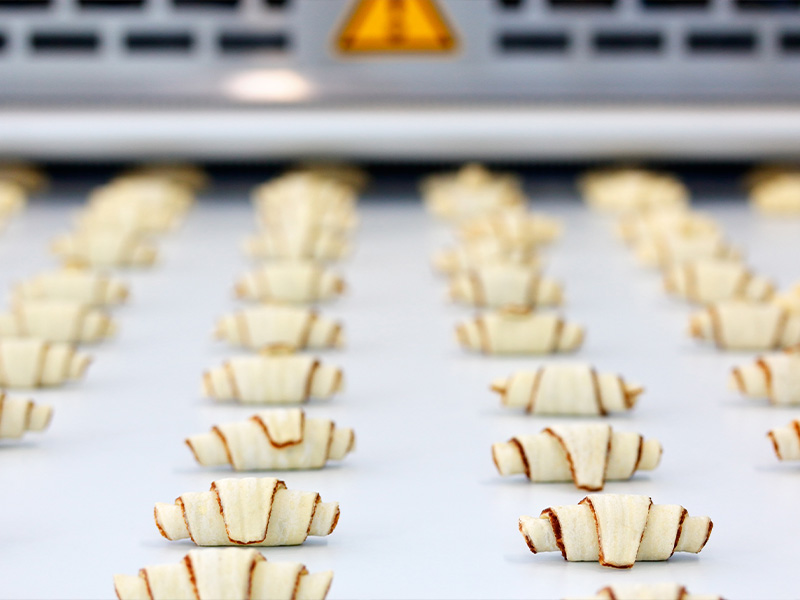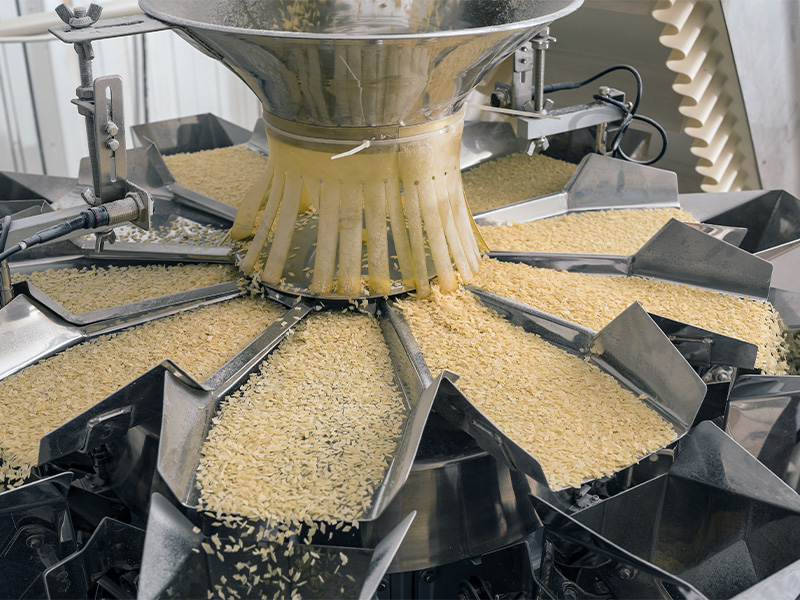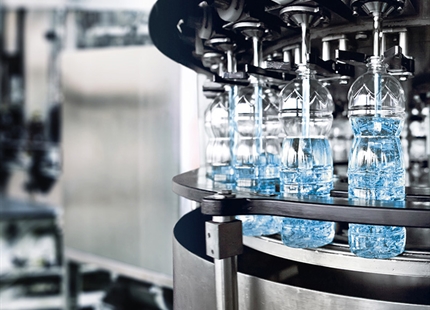Air Dehumidification in the Food Industry
Consistent air dehumidification has become an indispensable part of the entire process environment in food production, drying and storage.
Drying systems that function on the basis of modern condensation or adsorption technologies can solve a variety of different problems or — even better — prevent these problems from arising in the first place. For example, their use can prevent long-term damage to buildings or building equipment, or indeed to the production systems or storage facilities. Even more important to the manufacturer in a specific case: efficient dehumidification systems prevent the damage or losses in quality that moisture can cause in the food production and storage environment.
This can affect the substance of the products (for example, in the case of thickening of dehydrated products such as soup or sauce powder) or — as in the case of brewery products or certain types of cheese — can also have a direct impact on the taste quality of the products in question. This can be prevented!

Spray Drying
Where products, especially food products, are dried in spray dryers or fluidised bed systems, significant improvements in consistency and quality can be achieved by dehumidifying the supply air in advance.
These have a particularly positive effect — especially with the aim of achieving reliable and, above all, uniform food quality. Dehumidifiers not only limit the effects of the standard seasonal changes in weather and climate conditions, they also enable operators to eliminate the consequences of seasonal fluctuations.
In addition, dehumidification of the ambient air during cooling of the goods immediately before they are packed prevents them from continuing to absorb moisture.

Moisture Ingress due to Highly Frequent Cleaning
For hygienic reasons alone, cleaning has to be carried out frequently — often several times a day — in many food processing companies. One example is the meat-processing industry, where the utilised machines, work surfaces and floors need to be cleaned as often as three times a day to achieve the required level of cleanliness due to the considerable soiling that occurs there.
The problem: Wherever cleaning is carried out, for example using high-pressure cleaners, moisture is also deposited. If this is not removed regularly, it settles on the processed meat products, among other surfaces, and forms a breeding ground for germs and undesirable bacteria.

Hygroscopic Ingredients
(e.g. Starch)
In the industrial manufacture and further processing of hygroscopic substances, continuous dehumidification of the ambient air is essential for optimal production. Compounds that have a strong attraction to moisture, such as starch, may change not only their dimensions but also their colour and other characteristics when they absorb water. Crucially, however, the quality of the products and their individual components may also deteriorate to the point of being unusable or inedible.
For example, flour quickly forms lumps when it absorbs moisture, whereas sugar reacts chemically with water to form cast or caramel-like compounds that can make it unusable for further processing. The use of effective dehumidification solutions is vital in order to prevent the consequences of these reactions or processes.

Keeping Baked Goods
and Snacks Crisp
Every child knows: If left open for a certain period of time, biscuits, crisps, pretzels and pretzel sticks lose their crispness — they suck in and absorb moisture from the ambient air. In the case of baked goods, which primarily consist of hygroscopic ingredients flour and sugar, the desired properties can be guaranteed through humidity management.
Wherever bread is baked and stored, i.e. in bakeries or, even more extensively, in the industrial production of baked goods, effective dehumidification systems are used to keep the products crisp as well as to prevent the formation of mould.

Conveyability of General Cargo
and Bulk Material
An unhindered, consistently strong production flow of the conveyor and transport paths used is an essential component of process quality here. If the area surrounding these paths is not sufficiently dehumidified, adhesion or sticking of the products to the conveyor belts or clogging of the conveyor paths due to the formation of lumps can severely disrupt the production process.
Food manufacturers can optimally control and manage their processes through intelligent dehumidification solutions.

Keeping Baked Goods
and Snacks Crisp
Every child knows: If left open for a certain period of time, biscuits, crisps, pretzels and pretzel sticks lose their crispness — they suck in and absorb moisture from the ambient air. In the case of baked goods, which primarily consist of hygroscopic ingredients flour and sugar, the desired properties can be guaranteed through humidity management.
Wherever bread is baked and stored, i.e. in bakeries or, even more extensively, in the industrial production of baked goods, effective dehumidification systems are used to keep the products crisp as well as to prevent the formation of mould.

Conveyability of General Cargo
and Bulk Material
An unhindered, consistently strong production flow of the conveyor and transport paths used is an essential component of process quality here. If the area surrounding these paths is not sufficiently dehumidified, adhesion or sticking of the products to the conveyor belts or clogging of the conveyor paths due to the formation of lumps can severely disrupt the production process.
Food manufacturers can optimally control and manage their processes through intelligent dehumidification solutions.
Humidity in Manufacturing
This brochure provides information on what is
important to ensure the environment is optimally conditioned,
what needs to be considered and what solutions are available.

Because professional planning is the basis for functional quality and energy efficiency, we are happy to assist you with your project right from the planning phase.
Steam bath and steam shower
Nowadays, many hotels and health clubs offer spa facilities for the well-being of their guests and members:
A swimming pool, a sauna and more and mor...
Hammam, Caldarium and Rhassoul
A hamam is a steam bath in which a special bathing ceremony is held,
and is an important part of Islamic bathing and physical culture.
The focus is...
Archives
The preservation, provision and safeguarding of manuscripts, books, graphics, pictures, documents and other works of art and culture are the most imp...
Cold storage
When storing foodstuffs such as meat and sausage products, dairy products, pasta and frozen foods, an optimum ratio between the suitable indoor tempe...
Conveyor technology
Regardless of the industry, high conversion speeds, optimum coordination between the individual elements and, above all, reliable functionality are e...
Confectionery
It is in the nature of things (based on physics) that the production, processing and storage process of confectionery primarily depends on the contin...
Chemical industry
Whether it is a matter of binding raw materials together permanently, pulverising liquids or preventing potential side effects of reactions in applic...
Beverage Industry
Efficiently controlling humidity throughout the production and storage process environment offers companies in the beverage industry clear added valu...
Call Centers
A good room air humidity in a call center not only ensures the employees’ well-being, but also their performance and health. Today, respiratory illne...
Office Rooms
Employees must feel comfortable as they work. Motivation, efficiency, and health can be improved through contemporary design of the workplace. The ri...
























